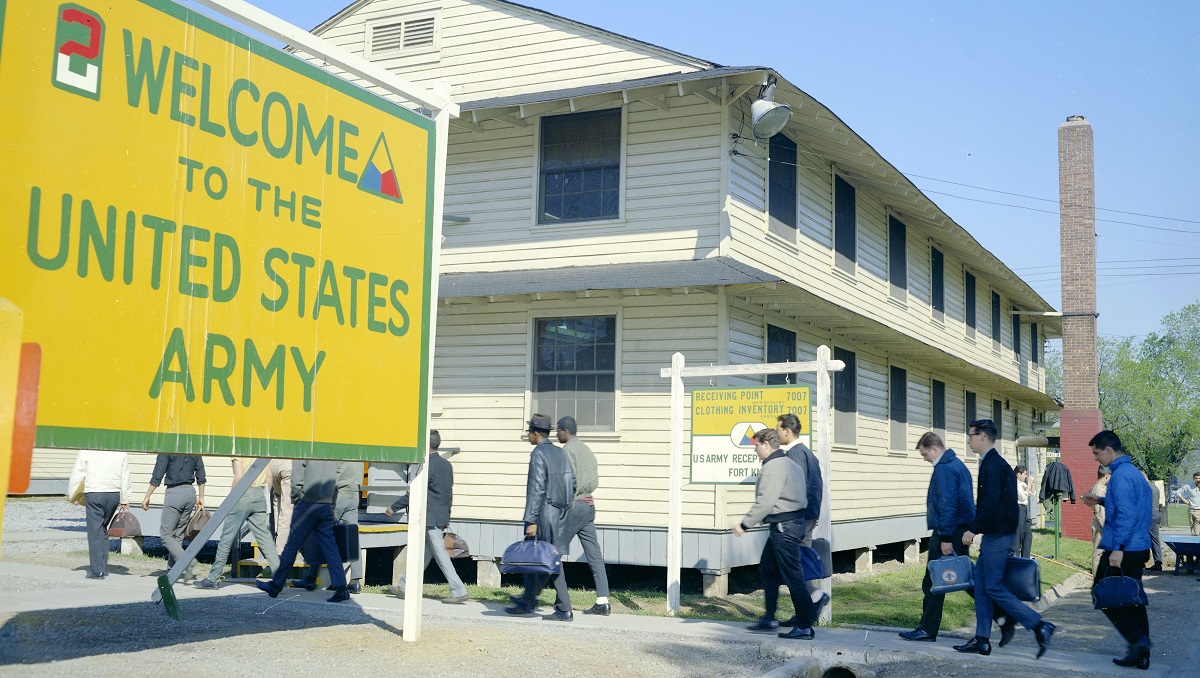
The U.S. Department of Defense underwent several significant changes in 1973. First, the law that empowered the draft expired when Congress didn’t extend it, and the all-volunteer force (AVF) was born. Second, Secretary of Defense James R. Schlesinger initiated “the Total Force Policy which integrates the active, Guard, and Reserve forces into a homogeneous whole.” Lindsay Cohn is in the studio to discuss the impact these force management changes have had on civil-military relations. She joins guest host Carrie Lee to consider how eliminating the draft and expanding the reserve component changed how the military interacted with the citizens of the nation. This is the fourth episode in a multi-part special series supporting the U.S. Army War College’s Civil-Military Relations Center.
Americans have never liked the draft. It’s never been popular. There have been times when it has been tolerated, and certainly some segments of the population view it as a solution to certain types of problems…But the American public in general has never been supportive of a draft.
Podcast: Download
Subscribe: Apple Podcasts | Spotify | Amazon Music | Android | Pandora | iHeartRadio | Blubrry | Podchaser | Podcast Index | TuneIn | Deezer | Youtube Music | RSS | Subscribe to A Better Peace: The War Room Podcast
The views expressed in this presentation are those of the speakers and do not necessarily reflect those of the U.S. Army War College, U.S. Army, or Department of Defense.
Lindsay P. Cohn is Associate Professor of National Security Affairs at the U.S. Naval War College, where she teaches strategy, international security, foreign policy analysis, and civil-military relations. Her research and publications focus on civil-military relations, manpower and personnel issues, public opinion and foreign policy, comparative political economy, militarized policing, and national/international security law.
Carrie A. Lee is an associate professor at the U.S. Army War College, where she serves as the chair of the Department of National Security and Strategy and director of the USAWC Center on Civil-Military Relations. She received her Ph.D. in political science from Stanford University and a B.S. from MIT.
Photo Description: A sign greets all new members of the Army arriving at the U.S. Army Reception Station in Fort Knox, Ky. on April 29, 1965.
Photo Credit: National Archives And Records Administration

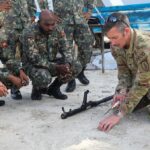
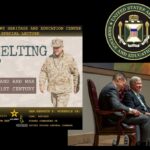
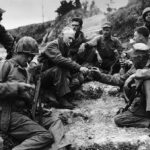
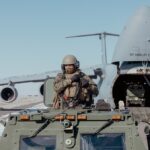
As I neared high-school graduation, I remember former students returning from
Vietnam speaking to the class. This usually included displaying their wounds, if
they had any. For teenagers from the post, the impact was deeper than they would
publicly admit. The realization that their fathers might return with such a wound,
or worse, had an unspoken effect on us all. Most of us also expected to be in one
of the services. Almost all of us knew that college would have to wait, and we
were raised to believe that country came first and we had an obligation to serve, if
called—Jane Fonda and college kids burning their draft cards were not really the
“true” America to us. Unfortunately, the TV branded everyone of a certain age as
being a hippie and antiwar, but it wasn’t so. (Break in the Chain Intelligence Ignored)
VOLAR decimated the Army. Having gone to Vietnam seemed to put you at the top of the list to be RIF’d – the Army lost a lot of very good people, but they didn’t care.
Dr. Lee – you used the term “insurrection” at the start of this podcast. No one from the 6 January riot has been charged with insurrection which is a federal crime. The prohibition on rebellion and insurrection arises in federal law at 18 U.S.C. Section 2383. The law prohibits incitement, assistance, and participation in a rebellion or insurrection against the authority of the United States and its laws.
Part I: Beginning at about the 25:00 point in this podcast, Dr. Cohn seems to say that — at the time of Posse Comitatus’ origin (1877 – 1878) — the Southern members of Congress would not pass a bill to fund the U.S. Army (accordingly, the Army was not paid in 1877); this, unless something akin to the Posse Comitatus Act was first passed. (A law then designed only to prevent the U.S. Army from being used to enforce black civil rights in the South — and thus — not designed to prevent the U.S. Army from being used for other domestic law enforcement purposes — such as to quell labor unrest.)
Thus, so as to allow that our nation — via the U.S. Army — might adequately deal with its massive labor unrest problems of that time, the “price” that the South exacted from the North, this was the allowance of “the return of white supremacists to political power in both southern states and Congress. Through the law, Congress sought to ensure that the federal military would not be used to intervene in the establishment of Jim Crow in the former Confederacy.” (See the October 14, 2021, Brennan Center for Justice article “The Posse Comitatus Act Explained” by Joseph Nunn.)
Part II: Beginning at approximately the 32:00 minute point of this podcast, Dr. Cohn say that the biggest threat to the total force today, this is political polarization. As to this such threat, might we say that — much as in the mid and latter 1870s — likewise today — the clash between minority civil rights — and majority supremacy — (a) rules the day and (b) defines this such political polarization?
Re: my Part II item immediately above — re: political polarization — could the true cause of American political polarization today (the emergence of the culture of globalization?) be similar to the true cause of American political polarization in the 19th Century (the emergence of the culture of industrialization?) back then? As to this such question, consider the following from Corey Patrick Gray’s 2015 Masters thesis paper “Industrial Modernization and the American Civil War” (therein, see the bottom of Page 2 and the top of Page 3):
“The American Industrial Revolution, which occurred at the turn of the Nineteenth-Century, was a true game-changing event. It is difficult to overstate its impact. Industrialization was a juggernaut that profoundly changed the institutions that form the base of my analysis: America’s social, political, and military institutions. It is a time of immense social, political, and economic change brought on by industrialization that we find the beginning causes of the war, an emerging rival culture — industrial modernization. The culture of industrial modernization, I argue, clashed with the preexisting agrarian-based culture and created the spark that ignited the passions of war.”
In consideration of the above, might we say that — in our current era — the new culture of globalization, this has clashed with the preexisting culture of industrialization, and has created the spark that now has ignited the passions of political polarization today?
Re:
a. Political polarization as being the greatest threat to the Total Force (and/or the military institution) today — as suggested by Dr. Cohn beginning at approximately the 32:00 minute mark in this podcast and
b. My thought above (using Corey Gray’s paper) that the “polarizing” effects of “the culture of globalization” on America’s institutions (of which the U.S. military is one) today, this might be similar (in type, kind and/or degree?) to the effects of “the culture of industrialization” on America’s institutions (to include our military institution) in period before the Civil War,
As to these such matters and thoughts, do they seem to “hold water?” If so, then what would be the “cure” to these such problems — then and now — for example, the significant rejection of and/or retreat from industrialization in earlier times — and/or — the significant rejection of and/or retreat from globalization in our current era? (In this regard, consider the national security implications of each of these such — “rejection of continuing modernization”/”return to the old ways” — choices !!)
Re: the end of the draft and the Total Volunteer Force’s beginning, might we consider the following?:
“The Total Force Policy evolved primarily in response to changes in the security environment. That environment included not just the objectives, strategies, and
capabilities of actors on the international stage, but also domestic forces that constrained and limited DoD’s response to that environment. When Secretary of Defense
Melvin R. Laird prescribed that ‘Guard and Reserve units and individuals of the
Selected Reserves will be prepared to be the initial and primary source for augmentation of the active forces in any future emergency requiring a rapid and substantial
expansion of active forces,’ DoD had few other viable options. The United States
needed a large, capable Army to serve as a credible deterrent to a resurgent Soviet
Union, but the Vietnam War had rendered the draft untenable as a means of generating the manpower needed for that Army. The reserve components offered the only feasible source of manpower to meet those demands within the tight budget constraints of
the early 1970s. In spite of vastly increased budgets in the 1980s, the Army’s implementation of the Total Force Policy remained essentially unchanged through the end of the
Cold War. In fact, nearly all of the growth in the Army in the 1980s occurred in the
Army’s reserve components, while the Regular Army’s size was generally held constant.”
(See the middle paragraph of Page xviii of the “Summary” section of the 2020 Rand study “The Evolution of U.S. Military Policy from the Constitution to the Present, Volume IV, The Total Force Policy Era, 1970–2015.”)
Question:
Might we say that — much as “manpower,” “capabilities,” “expertise,” etc., requirements seem to have (a) drove the move from the draft to the Total Volunteer Force back in Old Cold War days (see the quoted item above) and (b) drove the move from a more “straight” white male force in pre-Cold War days to the more black, brown, women, etc. volunteer force of that we saw in the Old Cold War — now likewise, “manpower,” “capabilities,” “expertise,” etc., requirements seem to drive the move to the more LBGTQ, etc., Total Volunteer Force in the post-Cold War era of today?
Transitions are critical and difficult. As an LT of FA I served in RVN with the 101st ABN 1968-69. I spent 8 months in the paddies of the costal plains as an FO the then further inland as the Fire Direction Officer for the 1/321 FA. We had soldiers of varied backgrounds, but leadable and concerned with each other and the mission. Back at Carson we had a mix of volunteers and draftees who were harder to lead.
Later at CGSC I had the honor of working with Don Holder and Huba Vosdesega (SP?) as the fire supporter (and translator) of Gen Don Stary’s handwritten critiques as they wrote AirLand Battle. I know they have been here many times to impart the lessons of doctrine writing. Having such people here should remain a critical part of how the AWC remains cutting edge.
From 1984-87 I commanded a nuclear capable 8-inch FA battalion in Germany and served on the VII Corps staff. As we studied the GDP and Soviet tactics, it was clear that we had the upper hand in doctrine, soldiers and equipment.
I was in the AWC Class of 88 and stayed to teach, retiring in 1997.
Thank you for the work you do to challenge thinking and creativity. Combat developments across the spectrum will remain critical to our future capabilities.